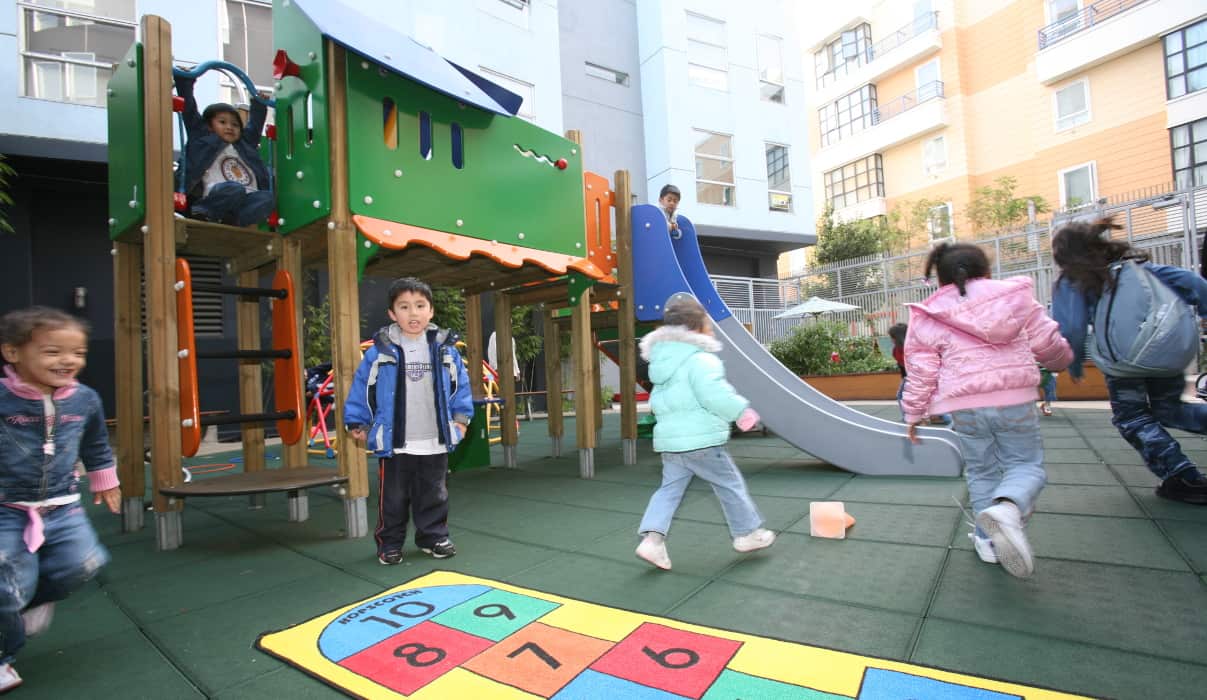The Biden-Harris campaign already articulated a strong commitment to our nation’s essential caregiving services, including the ECE sector.
- Affordability: The campaign’s proposal to provide pre-K for all 3- and 4-year olds and increase tax credits and other subsidies to help families cover the cost of care are vital components of accessibility and affordability of ECE programs.
- Workforce: Proposals to increase pay and benefits for the ECE workforce is a necessary investment in racial equity given that the ECE workforce is disproportionately comprised of women of color and is underpaid by an average of 31 percent of the U.S. median income.
- Facilities: Research shows that developmentally appropriate environments improve learning and development among children, yet facilities are an often overlooked and under resourced component of the ECE industry. The Biden-Harris proposal to invest in on-site child care facilities is an important step forward, especially at a time when more employers are recognizing that safe and reliable child care is instrumental to a sustainable and productive workforce.
Improving the physical quality and sustainability of ECE facilities and businesses is a top priority for LIIF. Based on over 25 years of experience in the ECE sector – including 276,000 ECE slots financed – we know that financing child care facilities and businesses is incredibly complex. As a result, CDFIs have an important role to play in sharing best practices and shaping federal investment in this critical component of the industry.
The National Children’s Facilities Network (NCFN), which LIIF co-chairs, recently sent a memo to the Biden-Harris team with recommendations for advancing the nation’s early care and learning infrastructure. The following recommendations are informed by the 26 nonprofit CDFIs, financial and technical assistance intermediaries, and ECE stakeholders who comprise NCFN’s membership and are dedicated to helping ECE providers develop sustainable business models and high-quality physical learning environments.
- Respond to the devastating consequences of the COVID-19 pandemic by passing large-scale investments that stabilize the child care sector. As countless ECE programs permanently close due to the pandemic, the nation’s already severely limited supply of quality child care is being exacerbated. An immediate emergency response is critical for the long-term supply of quality child care, as well as to the sustainability of our nation’s ECE entrepreneurs and caregivers.
- Invest in the physical quality of our nation’s early learning environments by providing dedicated resources for the acquisition, construction, development, and renovation of ECE facilities. Based on best practices developed by NCFN members and implemented across the country, NCFN recommends that these investments be coupled with technical assistance and business capacity building resources that are delivered through CDFIs and other intermediaries with demonstrated financing experience in ECE or other community facilities.
- Enact a comprehensive national assessment of the condition, quality, and availability of child care facilities. There is no comprehensive national data documenting the condition, quality or availability of child care facilities, leaving providers with few opportunities to report on their infrastructure needs. As a result, many states and localities do not have an adequate assessment of how the condition and service capacity of facilities affect health, safety, program quality, and availability of care.
- Create incentives to co-locate ECE facilities with other community amenities, such as affordable housing. Investments in ECE and other community amenities are most effective when undertaken as part of a holistic development plan. Many NCFN members are also experts in community development financing tools and can use this expertise to co-locate ECE programs with other community amenities, thereby increasing overall impact in the community.
- Incorporate innovative state and local financing models that can be scaled at the federal level. NCFN members are engaged in states and localities across the country, all of which present unique challenges and opportunities for financing ECE facilities and businesses. These examples can inform best practices for federal investments, including opportunities to leverage interagency oversight around community development, economic development, human services and ECE programs.
LIIF is encouraged that the Biden-Harris campaign has already articulated a deep commitment to the ECE sector, and we are eager to work with our partners in NCFN to advance these ambitious goals with the incoming Administration.
